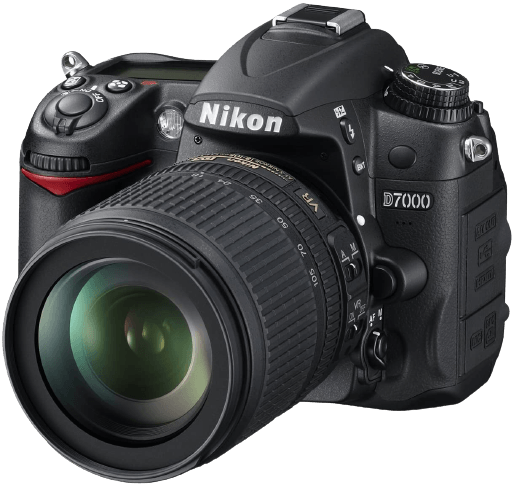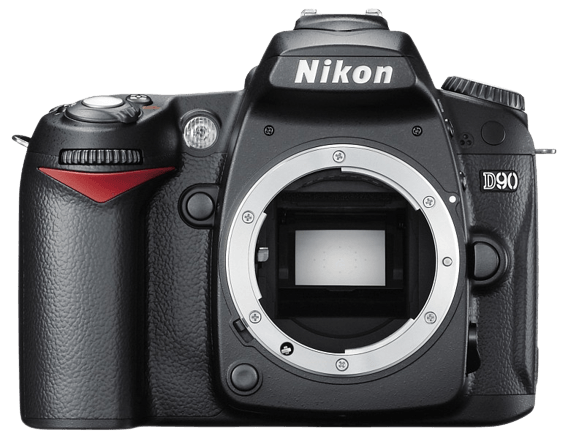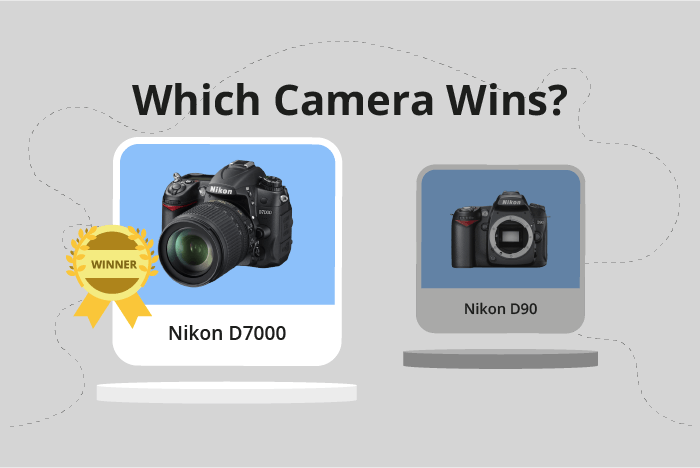Nikon D7000 vs D90 Comparison
Nikon D7000

Nikon D90

The Nikon D7000 outperforms the Nikon D90 with a score of 56/100 compared to 44/100. Both cameras are DSLR models, announced in 2010 and 2008 respectively. They share similar dimensions, with the D7000 measuring 132 x 105 x 77mm and the D90 at 132 x 103 x 77mm. The D7000, however, is slightly heavier at 780g compared to the D90’s 703g.
The higher score of the D7000 is due to its superior features and performance. Despite its higher launch price of $1200 compared to the D90’s $1235, the D7000 offers better value for money. On the other hand, the D90’s advantage lies in its lighter weight, making it easier to carry around for extended periods.
Considering the differences in scores and specifications, the Nikon D7000 is the clear winner in this comparison. The D90, while lighter, does not offer the same level of performance and features as the D7000.
Nikon D7000 vs D90 Overview and Optics
The Nikon D7000 outperforms the Nikon D90 in optics, scoring 55/100 compared to the D90’s 46/100. Both cameras share several specifications, such as the CMOS sensor type, APS-C sensor size, Nikon F lens mount, and lack of image stabilization. However, the D7000 excels in certain areas, making it the superior choice for optics.
The D7000 has a higher megapixel count at 16.2 compared to the D90’s 12.3, allowing for more detailed images. Additionally, the D7000 features a faster shooting speed of 6 frames per second, compared to the D90’s 4.5, making it better suited for capturing action shots and fast-moving subjects. The D7000 also has an improved processor, the Expeed 2, which contributes to better image processing and performance compared to the D90’s Expeed processor. Moreover, the D7000 boasts a higher DXOMARK sensor score of 80, compared to the D90’s 73, signifying better overall image quality.
Despite being outperformed by the D7000 in several areas, the D90 still has its merits. Its lower score does not necessarily mean it is an inferior camera overall, but rather that it is less advanced in terms of optics. The D90 may be more suitable for those who prioritize affordability and simplicity, as it still provides good image quality and shares many specifications with the D7000.
When comparing the Nikon D7000 and D90 solely based on optics, the D7000 is the clear winner due to its higher megapixel count, faster shooting speed, improved processor, and better DXOMARK sensor score. The D90 remains a viable option for those looking for a more budget-friendly camera, but the D7000’s superior optics make it the better choice for photographers seeking higher image quality and performance.
Nikon D7000 vs D90 Video Performance
When comparing the Nikon D7000 and the Nikon D90 in terms of video capabilities, it is important to note that the Nikon D90 does not have any video functionality. As a result, this section will focus on the video capabilities of the Nikon D7000.
The Nikon D7000 has a video score of 57 out of 100. It is capable of recording Full HD videos with a maximum resolution of 1920 x 1080. The camera offers a maximum video frame rate of 24 frames per second, which is suitable for most casual video recording needs. Additionally, the Nikon D7000 features built-in time-lapse functionality, allowing users to create compelling time-lapse videos without the need for external equipment or software.
Given the lack of video capabilities in the Nikon D90, the Nikon D7000 stands out as the better option for those interested in recording video content. The D7000’s video capabilities, including Full HD resolution, 24fps frame rate, and built-in time-lapse functionality, make it a more versatile camera for users who require video recording features.
Nikon D7000 vs D90 Features and Benefits
The Nikon D7000 surpasses the Nikon D90 with a feature score of 54/100 compared to the D90’s 41/100. Both cameras share several specifications, including a 3-inch screen size, no touchscreen, no flip screen, and no GPS. However, the D7000 offers additional features that contribute to its higher score.
One advantage the Nikon D7000 has over the D90 is its screen resolution, which is slightly higher at 921,000 dots compared to the D90’s 920,000 dots. This difference allows for a marginally clearer image display. Another significant advantage of the D7000 is the presence of WIFI connectivity, enabling wireless photo transfers and remote control of the camera. The D90 lacks this feature, making it less convenient for users who prioritize easy photo sharing and remote operation.
On the other hand, the Nikon D90 has no significant advantages over the D7000 in terms of features. Both cameras lack a touchscreen, flip screen, GPS, and Bluetooth capabilities. The only noticeable difference is the lower feature score for the D90, which reflects its fewer features and slightly lower screen resolution.
Taking these points into consideration, the Nikon D7000 is the better choice for users seeking a camera with more advanced features, such as WIFI connectivity and a marginally higher screen resolution. The Nikon D90 may still be suitable for those who do not require these additional features and prefer a simpler camera.
Nikon D7000 vs D90 Storage and Battery
The Nikon D7000 outperforms the Nikon D90 in storage and battery with a score of 79/100 compared to the D90’s 37/100. Both cameras share some common specifications, such as accepting SD and SDHC memory cards, and lacking USB charging capabilities.
The D7000 has a longer battery life of 1050 shots compared to the D90’s 850 shots, making it more suitable for extended shooting sessions. Additionally, the D7000 supports the newer SDXC memory cards and has dual slots, providing greater storage capacity options for users.
On the other hand, the D90 has no notable advantages in storage and battery over the D7000. The only difference lies in their battery types: EN-EL15 for the D7000 and EN-EL3e for the D90. However, this does not affect the performance of the cameras.
Considering the longer battery life and support for SDXC memory cards, the Nikon D7000 is the better choice in terms of storage and battery performance.
Nikon D7000 vs D90 – Our Verdict
Are you still undecided about which camera is right for you? Have a look at these popular comparisons that feature the Nikon D7000 or the Nikon D90:

